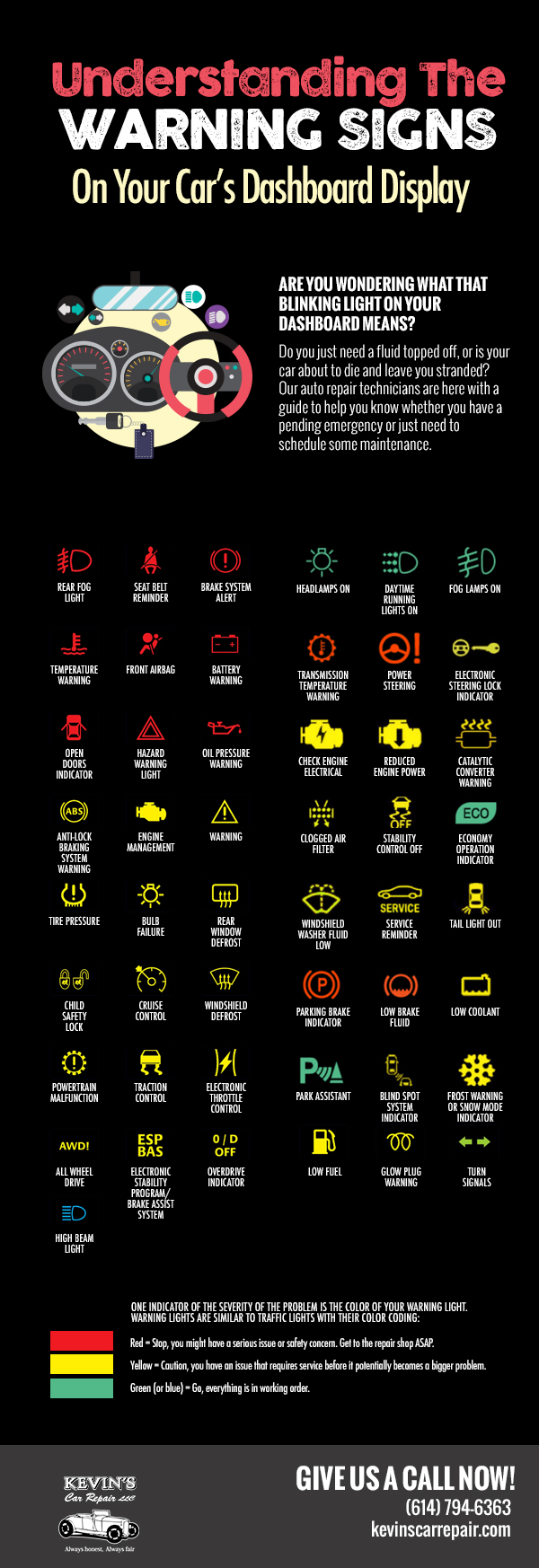Analyzing Your Car'S Alert Lighting: Their True Implications
Analyzing Your Car'S Alert Lighting: Their True Implications
Blog Article
Write-Up Writer-Hartley Kejser
When you're behind the wheel, those beautiful warning lights on your dashboard can be a bit puzzling. Do you know what they're attempting to tell you concerning your auto's health and wellness? Comprehending linked here of these lights is important for your safety and security and the long life of your automobile. So, the following time one of those lights appears, would not you intend to understand its message accurately and take the necessary steps to resolve it?
Common Caution Lighting and Interpretations
Identify common caution lights in your vehicle and recognize their meanings to guarantee risk-free driving.
One of the most regular warning lights consist of the check engine light, which indicates concerns with the engine or discharges system. If this light comes on, it's essential to have your car inspected promptly.
The oil pressure warning light suggests low oil stress, needing instant interest to prevent engine damages.
A blinking battery light might suggest a malfunctioning billing system, possibly leaving you stranded otherwise attended to.
The tire pressure surveillance system (TPMS) light alerts you to low tire stress, affecting automobile security and gas efficiency. Disregarding this can result in unsafe driving conditions.
The abdominal light suggests an issue with the anti-lock stopping system, jeopardizing your capacity to quit rapidly in emergency situations.
Finally, the coolant temperature cautioning light warns of engine overheating, which can cause severe damage if not settled promptly.
Understanding these usual caution lights will help you attend to issues immediately and preserve risk-free driving conditions.
Value of Prompt Attention
Understanding the typical warning lights in your automobile is just the first step; the importance of promptly attending to these warnings can't be emphasized enough to ensure your safety and security when traveling.
When a warning light illuminates on your control panel, it's your auto's method of communicating a prospective concern that needs attention. Neglecting these warnings can cause much more serious troubles down the road, endangering your safety and security and possibly costing you more out of commission.
Motivate focus to warning lights can prevent break downs and mishaps. For https://www.aftermarketnews.com/spark-interactive-launches-auto-repair-subscription-service/ , a flashing check engine light might indicate a misfire that, if left neglected, might trigger damages to the catalytic converter. Resolving this immediately can save you from a costly fixing.
In a similar way, a brake system cautioning light might indicate low brake liquid or used brake pads, important parts for your safety and security when driving.
DIY Troubleshooting Tips
If you see a caution light on your control panel, there are a couple of DIY fixing pointers you can try before looking for professional aid.
The very first step is to consult your car's guidebook to recognize what the particular caution light indicates. Occasionally the problem can be as simple as a loosened gas cap causing the check engine light. Tightening the gas cap might fix the problem.
Another usual issue is a reduced battery, which can cause different warning lights. Inspecting the battery links for deterioration and ensuring they're safe and secure might deal with the trouble.
If a warning light persists, you can try resetting it by detaching the automobile's battery for a few mins and afterwards reconnecting it. In addition, checking your lorry's liquid levels, such as oil, coolant, and brake fluid, can assist troubleshoot cautioning lights related to these systems.
Final thought
To conclude, recognizing your automobile's caution lights is crucial for keeping your vehicle running efficiently and securely. By without delay attending to these notifies and recognizing what they imply, you can prevent costly fixings and potential malfunctions.
Keep in mind to consult your car's manual for specific details on each cautioning light and do something about it accordingly to guarantee a trouble-free driving experience.
Remain educated, remain secure on the road!
